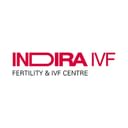Get the App
For Doctors
Login/Sign-up
Last Updated: Aug 27, 2023
BookMark
Report
IVF Protocols For Low Ovarian Reserve / Poor Egg Quality!
The available eggs in the ovaries at a time are collectively called an ovarian reserve. Low reserve happens when the production of eggs reduces. This affects the chances of pregnancy. The general cause of low reserves can be aging ovaries. In such cases, the ovary may be healthy and functioning even if the reserve is low. Production of eggs lower as a woman ages. A woman starts with 250,00 to 500,000 eggs at puberty and ends up with 1000 eggs at menopause.
Causes:
Low reserves are caused by
- Production of eggs decreases: Chromosomal abnormalities like Turner syndrome (lack of two X chromosomes) and genetic anomalies like Fragile X can decrease egg production.
- Ovarian tissue damage: Rough torsion, endometriosis triggered ovarian cysts, malignant or benign tumours, surgical removal of ovary or any other part of it, chemotherapy or radiation, pelvic adhesions, immunological problems or high BMI (Body Mass Index) can destroy the ovarian tissues.
IVF Protocols:
If a woman has low ovarian reserves, then she will be put on the either of the following protocols:
- Short GnRHa Flare: Gonadotrophin releasing-hormone-agonist (GnRHa) like Lupron, Nafarelin, Synarel or Buserelin is administered. This therapy is initiated at the onset of menstruation. The goal of the treatment is to stimulate the release of the follicular stimulating hormone (FSH) which augments the ovarian follicular growth.
- Combined Clomiphene or Gonadotrophin/Letrozole Stimulation: Older women are mostly administered this protocol. But it is strongly advised not to, as this protocol can potentially harm the egg or the embryo.
- Mid-follicular GnRH-antagonist protocol: Once the GnRHa-agonist protocol is commenced, the GnRH-antagonist is given several days later. Once the follicles reach the size of 12mm, GnRHa antagonists like Ganirelix, Orgalutran, Cetrotide and Cetrorelix are added. These drugs stop the pituitary from secreting the luteinizing hormone (FSH leads to secretion of this hormone).
- Long GnRHa Pituitary Down Regulation Protocol: This is the usual approach to deal with low ovarian reserves.
- Agonist/Antagonist Conversion Protocol: This protocol inhibits FSH production. This protocol generally yields good results.
In case you have a concern or query you can always consult an expert & get answers to your questions!



+1.svg)
